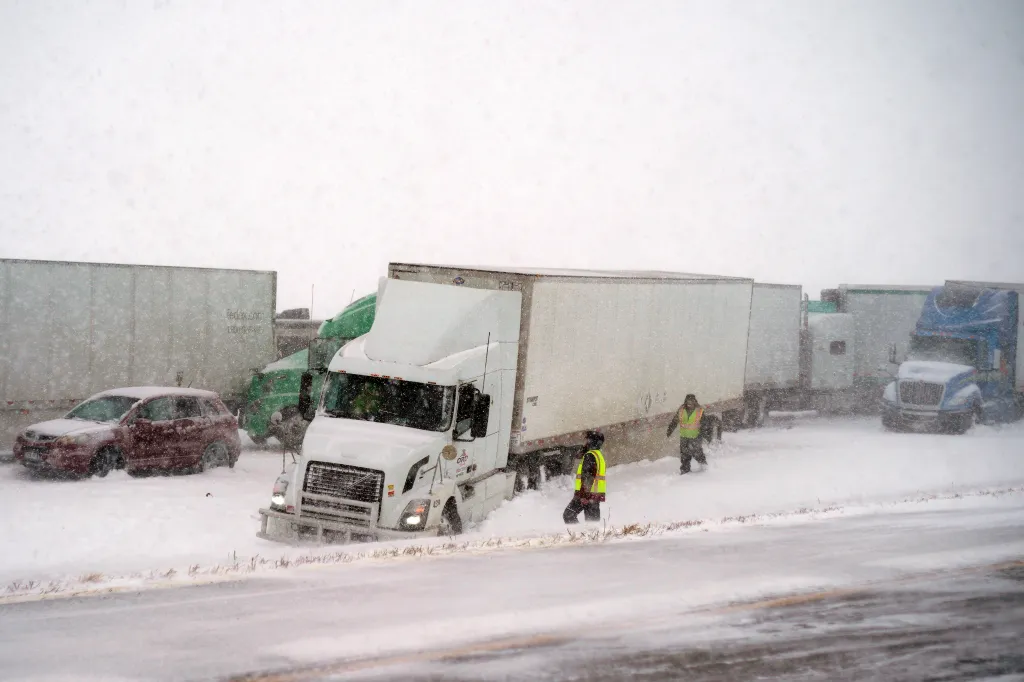How Winter Roads in Nebraska Increase the Risk of TBI Accidents

Winter in Nebraska transforms the landscape into a snowy wonderland, but those icy roads come with serious risks. From black ice hiding beneath a light dusting of snow to slush that reduces traction, winter conditions create hazards that drivers and pedestrians alike often underestimate. When accidents happen in these conditions, the injuries are frequently severe, and traumatic brain injuries (TBIs) are among the most devastating.
Understanding how winter road conditions contribute to these accidents is critical. When drivers take the time to prepare and adjust their habits, they can dramatically reduce their chances of causing harm to others. And for those who’ve suffered because of someone else’s carelessness, working with Berry Law can make the difference between a long, uncertain journey and a path toward justice and healing.
The Hidden Dangers of Black Ice
Black ice is one of the most dangerous hazards during Nebraska winters because it’s almost invisible. Drivers who hit black ice often lose control of their vehicles without warning, leading to serious crashes that can leave victims with head injuries.
Avoiding black ice requires vigilance and preparation. Drivers should slow down in shaded areas, on bridges, and early in the morning when ice tends to form. Motorists who fail to account for these conditions put others, especially motorcyclists, bicyclists, and pedestrians, at serious risk.
Reduced Traction and Longer Stopping Distances
Snow, ice, and slush make it harder for tires to grip the road, leading to longer stopping distances. Even a minor lapse in attention can turn a routine commute into a life-threatening crash. Rear-end collisions caused by these conditions frequently lead to head and neck injuries.
Drivers can reduce risks by increasing following distances and slowing down well below the posted speed limit when conditions worsen. Unfortunately, many fail to take these precautions, creating a higher risk of collisions that often result in serious injuries.
Speeding in Unsafe Conditions
One of the most common causes of winter crashes is drivers who fail to slow down in icy or snowy conditions. Traveling at normal highway speeds on slick roads is a recipe for disaster, especially when visibility is limited. Drivers need to adjust their speed and maintain a safe following distance to ensure they can react to unexpected changes in the road conditions.
Victims of these avoidable crashes often suffer TBIs due to the violent impact of the collision. When negligent drivers fail to adjust their behavior to the conditions, they can and should be held responsible for the harm they cause. Authorities need to implement stricter regulations and penalties to deter such negligent behavior on the roads.
Distracted Driving Meets Hazardous Roads
Winter conditions demand more focus from drivers, not less. Unfortunately, distractions like texting, adjusting navigation systems, or even grabbing a coffee can lead to catastrophic accidents when combined with icy streets. Drivers must minimize distractions and prioritize safety when driving in these challenging weather conditions.
A momentary lapse in attention is all it takes for a vehicle to skid, slide, or rear-end another car. Staying alert and keeping hands on the wheel in winter conditions saves lives and reduces the risk of serious injuries, such as traumatic brain injuries. Practicing safe driving habits, such as maintaining a safe following distance and adjusting speed to match road conditions, is crucial during the winter months.
Vehicle Maintenance Neglect
Neglecting vehicle maintenance during the winter months is another contributing factor in TBI accidents. Bald tires, worn brakes, or malfunctioning windshield wipers can turn a manageable situation into a deadly one. Regular maintenance checks can help ensure that your vehicle is equipped to handle winter conditions, significantly reducing the risk of accidents.
Regular inspections and winter-specific maintenance can prevent many weather-related crashes. Drivers who ignore these basics not only endanger themselves but also put everyone else on the road at risk. Victims of such negligence often face long recoveries and mounting expenses from preventable accidents.
The Impact of Severe Collisions
Crashes on icy roads are serious because drivers can lose control. When cars spin or slide, people may suffer life-changing injuries and face many challenges. Common outcomes include:
- Traumatic brain injuries (TBIs) – Head trauma from violent impacts can cause lasting cognitive, emotional, and physical impairments.
- Severe orthopedic injuries – Broken bones, spinal damage, or crushed limbs often require multiple surgeries and long-term care.
- Extended recovery times – Rehabilitation may take months or years, leaving victims unable to resume normal routines.
- Mounting medical expenses – Hospital bills, therapy costs, and ongoing treatment can create significant financial strain.
- Lifestyle changes – Permanent disabilities or chronic pain can limit mobility, independence, and quality of life.
- Accountability for negligent drivers – Legal claims help ensure at-fault drivers are held responsible for the harm they cause.
- Compensation for victims – Recovery may include damages for medical costs, lost wages, pain and suffering, and long-term care.
- Community impact – Legal action not only helps victims but also raises awareness about winter driving dangers, encouraging safer practices.
Protecting Yourself on Winter Roads
While you can’t control other drivers, there are steps you can take to reduce your risk. Driving slowly, keeping a safe distance, and wearing your seat belt can all minimize your chances of serious injury in a crash. Additionally, staying focused and avoiding distractions while driving can further enhance your safety on the road.
For pedestrians and cyclists, wearing bright, reflective clothing and using lights in low visibility can make a big difference. Staying alert to traffic patterns and avoiding heavily trafficked areas during snowstorms adds another layer of safety. Additionally, being aware of your surroundings and having a plan for safe routes can further enhance your safety while traveling in winter conditions.
Seeking Support After a TBI
A traumatic brain injury can change every aspect of your life, from your ability to work to your daily routines. Recovering from these injuries often requires specialized medical care, therapy, and long-term planning. Support from family and friends plays a crucial role in navigating the challenges of recovery.
Reaching out for support, whether it’s medical, legal, or emotional, can help you rebuild after such a devastating accident. The right resources and a strong support network make navigating the aftermath less overwhelming and set the foundation for a more stable future. Connecting with others who have experienced similar challenges can also provide valuable insights and encouragement along the way.



